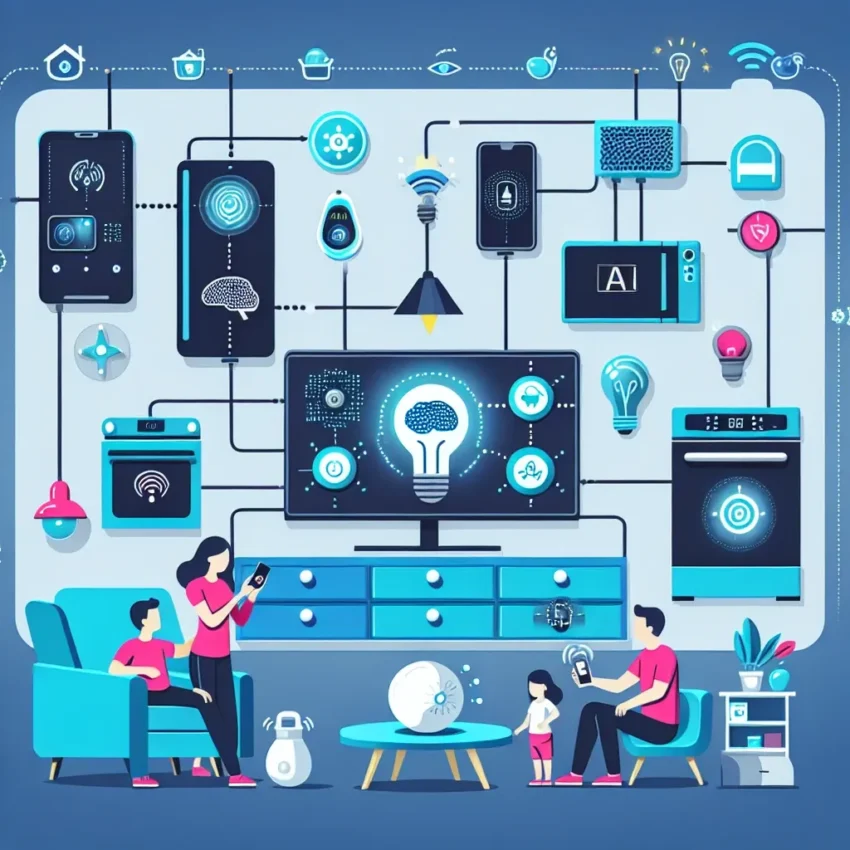Introduction
In today’s fast-paced digital era, the integration of technology into our daily lives has become paramount. Comcast, a leader in telecommunications, is taking significant strides by piloting an innovative program that employs artificial intelligence (AI) to enhance coordination among household devices in U.S. homes. This article delves into the implications of this technology, its historical context, benefits, and the potential future of AI-powered household device coordination.
The Rise of Smart Homes
The concept of smart homes has been around for several years, driven by advancements in technology and consumer demand for automation. The integration of smart devices—from smart thermostats to security cameras—has transformed how individuals interact with their living spaces. As of 2023, a significant percentage of U.S. households have adopted at least one smart device, indicating a shift towards more connected living environments.
Historical Context
The journey towards smart homes began in the late 1990s with the introduction of home automation systems. Over the years, technological advancements and the proliferation of the Internet of Things (IoT) have accelerated this movement. As smart devices became more affordable and accessible, consumers embraced them, creating a demand for seamless integration. Comcast’s latest initiative could be the next pivotal step in this evolution, offering an AI-driven solution for device coordination.
Understanding the AI-Powered Coordination
The pilot program by Comcast focuses on utilizing AI algorithms to facilitate communication and coordination among various smart devices within a home. The technology aims to streamline user experience by automatically adjusting settings based on user preferences and routines.
How It Works
- Data Collection: The AI system collects data from connected devices to understand usage patterns.
- Learning Preferences: It learns individual preferences over time, adapting to user behavior.
- Automated Coordination: The system enables devices to work together, enhancing functionality (e.g., adjusting lighting when a home security system is triggered).
Benefits of AI-Powered Device Coordination
The potential benefits of this innovative approach are numerous:
- Enhanced Convenience: Homeowners can enjoy a more seamless and automated living experience.
- Energy Efficiency: By coordinating devices, the system can optimize energy usage, leading to lower utility bills.
- Improved Security: With smart security devices working in tandem, homeowners can enhance their home’s safety.
- Personalized Experience: The AI learns individual habits, allowing for tailored solutions that fit specific lifestyles.
Challenges and Considerations
While the prospects of AI-powered household device coordination are exciting, several challenges need to be addressed:
- Privacy Concerns: With increased data collection comes the potential for privacy issues. Consumers must understand how their data is used and protected.
- Interoperability: Ensuring that various devices from different manufacturers can work seamlessly together is crucial for success.
- Technical Issues: As with any technology, there is always the risk of glitches and failures that could disrupt service.
Future Predictions
The future of AI in household device coordination looks promising. As technology progresses, we can expect:
- Increased Adoption: More households will likely integrate AI-powered systems as the technology becomes more advanced and affordable.
- Wider Device Compatibility: The industry may see standardized protocols that enhance interoperability among devices.
- Advanced Features: Future iterations may include predictive capabilities that anticipate user needs before they are expressed.
Real-Life Examples
As Comcast pilots this program, other companies have already seen success with similar technologies. For instance, Amazon offers Alexa routines that allow users to automate multiple devices with a single command. Similarly, Google Nest provides coordinated actions among its smart devices, showcasing the potential of integrated living.
Cultural Relevance
The push towards smart homes reflects broader cultural shifts towards convenience and efficiency. As society increasingly values time-saving solutions, AI-powered household device coordination aligns with modern consumer expectations. This technology also resonates with the growing environmental consciousness, as energy efficiency becomes a priority for many consumers.
Expert Insights
Experts in the field believe that Comcast’s initiative could set a new standard for home automation. According to technology analyst Dr. Emily Chen, “The integration of AI in household devices is not just a trend; it’s the future of how we interact with our homes. Comcast’s pilot program is a significant step towards making these technologies more accessible and user-friendly.”
Conclusion
Comcast’s pilot program for AI-powered household device coordination represents a groundbreaking advance in the smart home landscape. By leveraging artificial intelligence, Comcast aims to create a more connected, efficient, and user-friendly home environment. As this technology evolves, it has the potential to redefine how we interact with our living spaces, enhancing convenience and security while addressing the challenges of modern living. As consumers, we should embrace these innovations, keeping an eye on the privacy implications and ethical considerations they entail.

